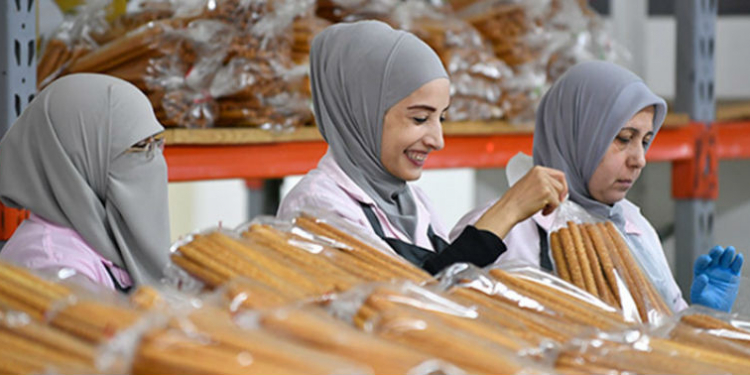The FINANCIAL — Jordan’s economy is expected to see a modest increase in the pace of growth this year and next, supported by stronger private consumption driven by a rising population of refugees and the implementation of structural reforms, the European Bank for Reconstruction and Development (EBRD) said in a new report.
The EBRD’s latest Regional Economic Prospects report also saw a positive impact from a Jordanian government programme to offer citizenship to selected foreign investors, an improved global outlook and confidence stemming from fiscal consolidation.
The country’s exports would benefit from higher mining output, rising phosphate prices and the reopening in 2017 of the border with Iraq, it added.
Economic expansion is expected to reach 2.5 per cent in Jordan in 2018 and 2.7 per cent in 2019, after 2.0 per cent in each of the previous two years.
The small rise comes amid an upward revision of the outlook for the EBRD’s southern and eastern Mediterranean (SEMED) region, which in addition to Jordan also includes Egypt, Lebanon, Morocco and Tunisia.
The upward revision reflects a significant upgrade for Egypt, compared with the previous outlook in November 2017, while the 2018 forecasts for Morocco and Lebanon have been revised down.
The EBRD pointed to risks in the outlook for Jordan, including the potential for slippage in the roll-out of reforms, an escalation of regional conflict and the possibility of protracted conflict in Syria and Iraq which are Jordan’s main export markets.
The economy could also come under pressure from a further increase in the arrival of refugees and tighter liquidity in Gulf Cooperation Council countries, which are typically a source of funding for Jordan.
A surge in the US dollar would undermine competitiveness. On the upside, any involvement of Jordanian businesses in future reconstruction of Syria and Iraq would positively support growth.
Within the SEMED region, Egypt’s economic growth is expected to accelerate to 5.3 per cent in the 2017-18 fiscal year and to 5.5 per cent in 2018-19, after a previous 4.2 per cent, supported by a continued boost in confidence, a recovery in tourism and an increase in foreign direct investment.
The EBRD report also referred to improved competitiveness, a continued strengthening of exports, the start of natural gas production from the Zohr field, the implementation of business-environment reforms, and prudent macroeconomic policies.
The main risks to the outlook arise from a slowdown – or reversal – of reforms, a resurgence of inflation resulting from the next round of subsidy reforms, and increases in global oil prices which would delay fiscal consolidation. Any such risks could be offset however by the strong commitment of the Egyptian authorities to the country’s reform programme.
The EBRD said Lebanon’s outlook remained uncertain, with growth expected to remain low at 2 per cent in 2018 and 2.5 per cent in 2019 after 1.2 per cent in 2017. In the longer term, growth would rise gradually due to the positive impact on external demand from the global recovery, and continued confidence in the banking sector. But the performance would depend on political stability and the strong implementation of reforms announced by the authorities.
After a rebound in the agricultural sector saw the Moroccan economy expand by 4.0 per cent in 2017, growth is expected to slow this year to 3.0 per cent but rise back to 4 per cent in 2019. The report said the economy would be supported by the continued recovery in tourist arrivals, an increase in foreign direct investment, the upturn in the eurozone and greater competitiveness from the move to a more flexible exchange rate regime.
It also expected to see a positive impact from a rebound in services and manufacturing, stronger export growth – notably in the automotive and aeronautics industries – and expanded mining capacity. Sustained growth would depend on continuing the implementation of reforms to improve the business environment and boost productivity, and diversifying the economy away from agriculture.
Growth in Tunisia is expected to increase to 2.7 per cent in 2018 from 1.9 per cent in 2017 and gradually pick up to 3.0 per cent in 2019, driven by a continued recovery in tourism and investment, stronger growth in major export markets in Europe, and the implementation of structural reforms.
The EBRD report sees risks to the Tunisian economy from further increases in inflation resulting from a reintroduction of a mechanism that adjusts fuel prices in line with fluctuations both in currencies and international oil prices.
Risks may also come from uncertainties related to elections due in 2019 and any disruption in the phosphate and hydrocarbon industries from possible protests.
Any faster-than-anticipated normalisation of monetary policy in the United States of America that led to a stronger US dollar could amplify debt vulnerabilities, given the fact that two-thirds of Tunisia’s debt is denominated in foreign currency.





























Discussion about this post